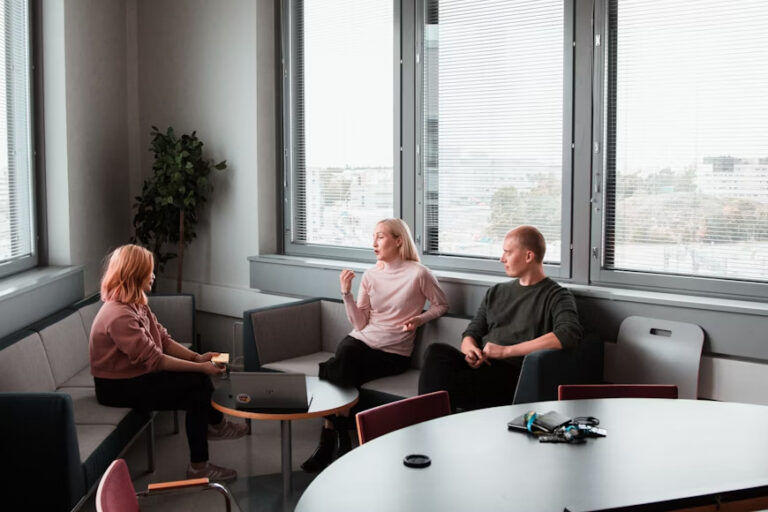In the quest for mental wellness, the significance of the physical environment often goes unnoticed. Yet, the spaces where healing takes place can profoundly influence the recovery journey. In this article, we’re going to explore how residential mental health facilities can make their spaces a strong force for healing and shape environments that deeply connect with recovery, peace, and feeling good all around.
How the Environment Affects Mental Health
Our surroundings speak to us. Often silently, sometimes loudly, but always significantly. This dialogue between space and psyche is especially pertinent in residential mental health treatment facilities. Several studies underscore the impact of physical elements — light, color, and space configuration — on mental well-being. Bright, natural light can uplift spirits, combating depression symptoms. Conversely, dim, artificial lighting may exacerbate anxiety and fatigue.
Color psychology further illustrates this interaction. Blue hues offer a calm, soothing backdrop, ideal for contemplation and recovery. Reds and oranges, while energizing, might be too stimulating for some, potentially leading to unrest. The spatial arrangement also plays a pivotal role. While overcrowded rooms can trigger stress, spacious layouts encourage freedom and peace of mind. Paying attention to elements like light, color, and space enhances the healing journey, giving traditional treatments a powerful boost.
Design Principles for Healing Environments
Designing a healing environment extends beyond aesthetic appeal. It involves crafting spaces that actively contribute to recovery and wellness. Here, we outline the core principles guiding such design:
- Natural Light Maximization: Harnessing sunlight not only brightens spaces but also regulates sleep cycles and mood, which is essential in mental health recovery.
- Color Consideration: Utilizing calming colors in living and therapy areas can create a serene atmosphere conducive to healing.
- Open Spaces with Privacy Options: Balancing open areas for community interaction with private spaces allows individuals to manage their social engagement levels, catering to varied recovery needs.
- Nature Integration: Adding plants and water features and ensuring views of nature as part of a facility’s design can seriously dial down stress and help patients on their road to recovery.
- Sensory Balance: Keeping noise to a minimum and choosing materials that are gentle on the senses can make a space feel safe and soothing rather than overwhelming.
By weaving these principles into the fabric of a facility, we can elevate a space from just somewhere to live to a true haven of healing.
Individualizing Space to Enhance Recovery
Recovery is deeply personal. Hence, personalizing living spaces in mental health facilities can make a world of difference. Allowing residents to bring personal items, choose their room color, or even arrange furniture can foster a sense of control and ownership over their recovery process. This autonomy not only comforts but also empowers, making the space an ally in their healing journey.
Fostering Connections Through Shared Spaces
Healing thrives on connection, and shared spaces within facilities serve as the backdrop for these crucial interactions. Designing these areas to promote comfort and ease of interaction — through communal dining areas, shared gardens, or cozy sitting rooms — encourages residents to forge supportive bonds. These connections offer emotional support, shared experiences, and a sense of community, all vital for recovery.
Practical Strategies for Facility Managers and Designers
Creating healing spaces requires intention and creativity. Here are a few actionable strategies that can help:
- Engage with Residents: Understanding their needs and preferences can guide meaningful design changes.
- Prioritize Flexibility: Spaces adaptable to different activities and individual preferences can enhance comfort and usability.
- Embracing Technology: Smart lighting and sound systems aren’t just gadgets; they’re tools we can use to tailor environments to what individuals need right then and there, from calming lights to sounds that soothe.
- Evolving Spaces: Our environments should grow and change just like we do, adapting based on what people living there tell us they need and what’s new and helpful out there.
Conclusion: The Path Forward in Designing Healing Spaces
Creating healing spaces in mental health facilities goes way beyond picking out curtains and paint colors. It’s about crafting environments that actively promote recovery and well-being. By shining a light on natural light, welcoming nature indoors, making spaces feel personal, and building a sense of community, we turn these facilities into sanctuaries for those on their journey to mental wellness. Let’s keep pushing the boundaries and making sure our spaces really talk the talk of healing.














